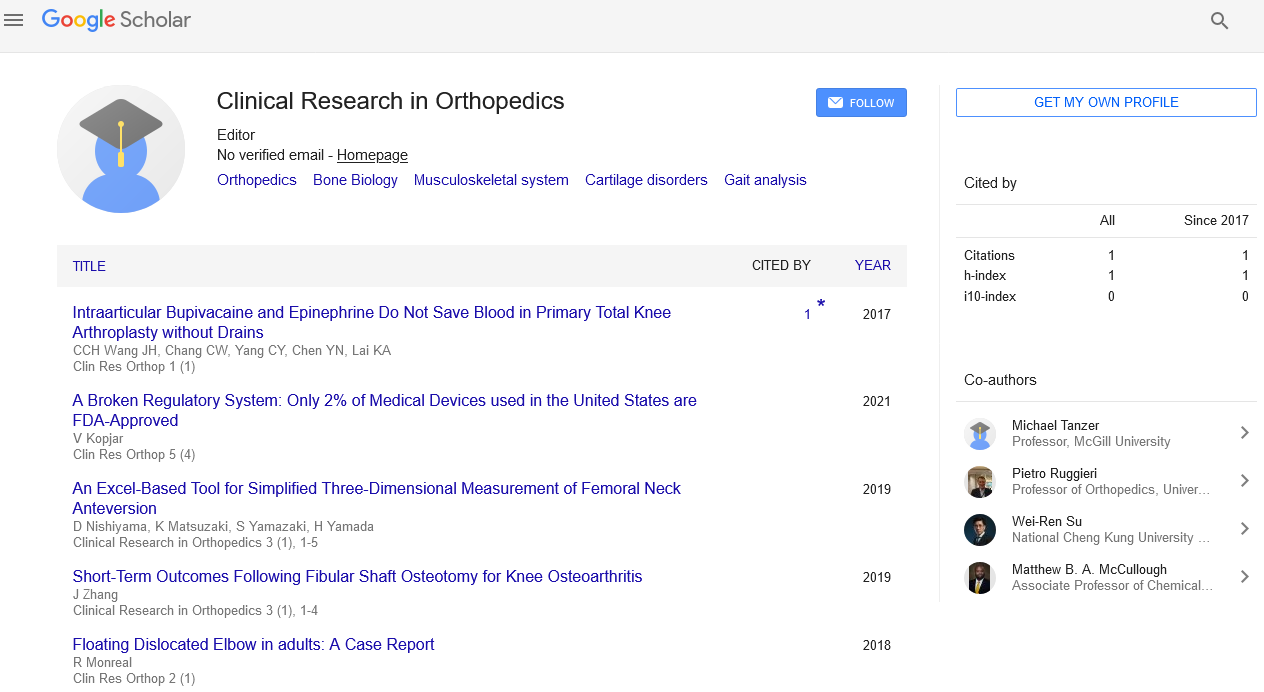The effect of intra-articular injection of tranexamic acid on post-operative blood loss in unilateral total knee arthroplasty
Mohamed Shaaban Ibrahim, Alaa El Deen Mohi El Deen, Khaled Abd El Halim and Ahmed Samir el Kalyoby
Cairo University, Cairo
: Clin Res Orthop
Abstract
From June 2016 till February 2017 A clinical prospective randomized study is carried on 30 patients with severe osteoarthritis, who underwent primary TKR in order to see the effect of IA TXA injection on decreasing the amount of blood loss after the operation. The patients were randomized to 2 groups, the 1st group (15 patients) injected with saline only and 2nd group (15 patients) injected with mixture of tranexamic acid and saline. A similar protocol of surgical management was used for both groups. All patients were operated under epidural anesthesia, with tourniquet control of 350 Hg pressure. Crystalloids in the form of normal saline (NS) Or plasma were used as maintenance fluids. All operations was done using a standard midline incision with medial Para patellar approach will be used for all the surgeries. Wounds are closed in layers over a 16 gauge non-suction drain, Injection cocktail is delivered retrograde into the drain then the drain was closed for 2 hours. Postoperative protocol similar protocol for both of the groups was used. Postoperative note for nurse stuff to leave the drain closed for 2 hrs. after the operation, patients were kept in 1st 48 hrs. in the ICU under observation and continuous reading for the drains amount was recorded in patient file. The conclusion was that intra-articular injection of TXA retrogradely via the drain at the end of the operation and clamping the drain for 2 hrs. Effectively reduced postoperative blood loss At least by 600 cc and so decreased the need for blood transfusion after cemented TKR, and so this decreased the hospital stay and permit the patients early mobilization instead of bed stay for 3 days, the patient moved after removal or even before removal of the drain 48 hrs. There is no evidence of occurrence of complication as DVT is seen clinically in all the patients in this trail so this technique is a simple, easy-to-use method that is suitable and safe for these patients.
Biography
 Spanish
Spanish  Chinese
Chinese  Russian
Russian  German
German  French
French  Japanese
Japanese  Portuguese
Portuguese  Hindi
Hindi 